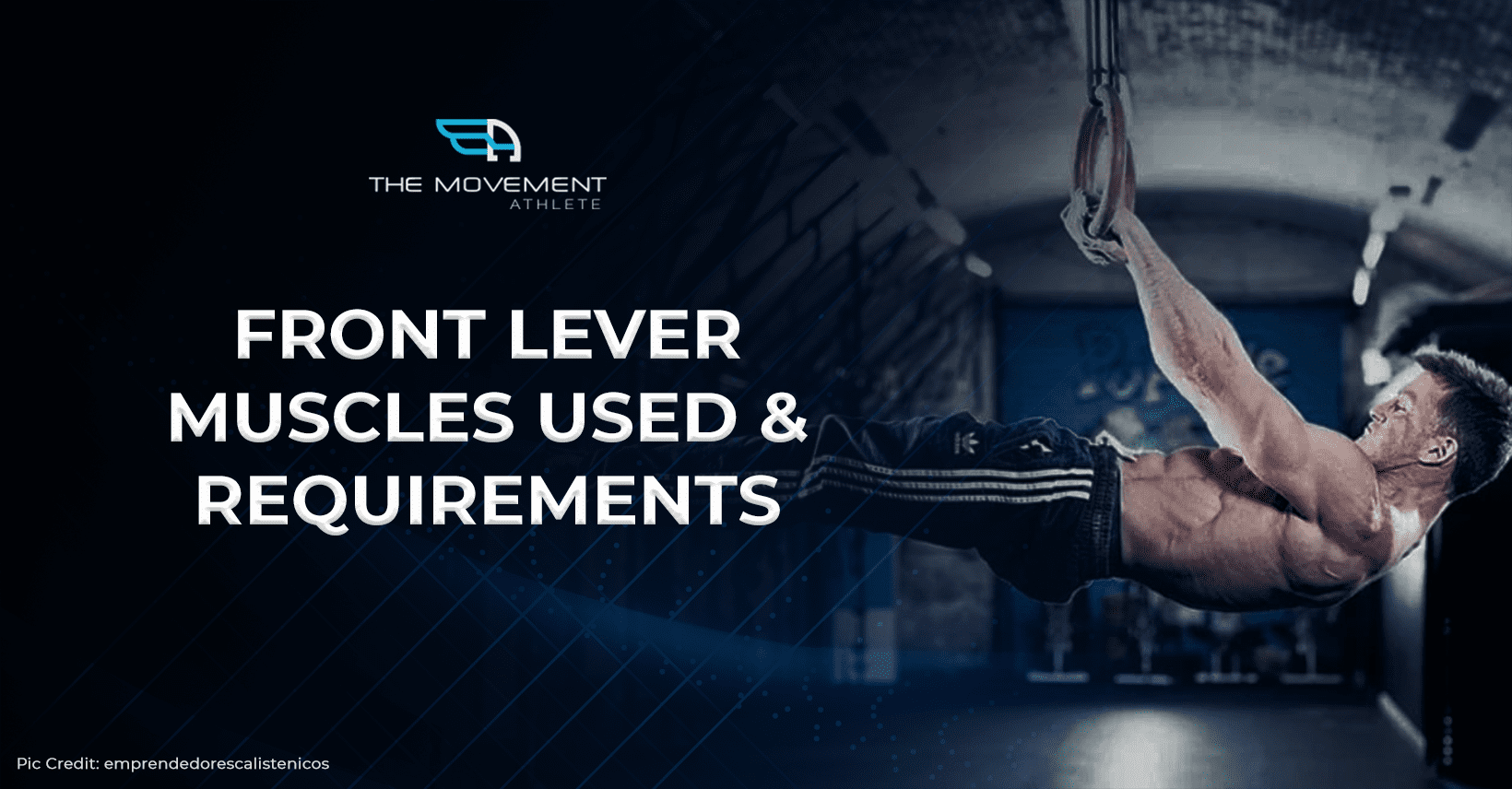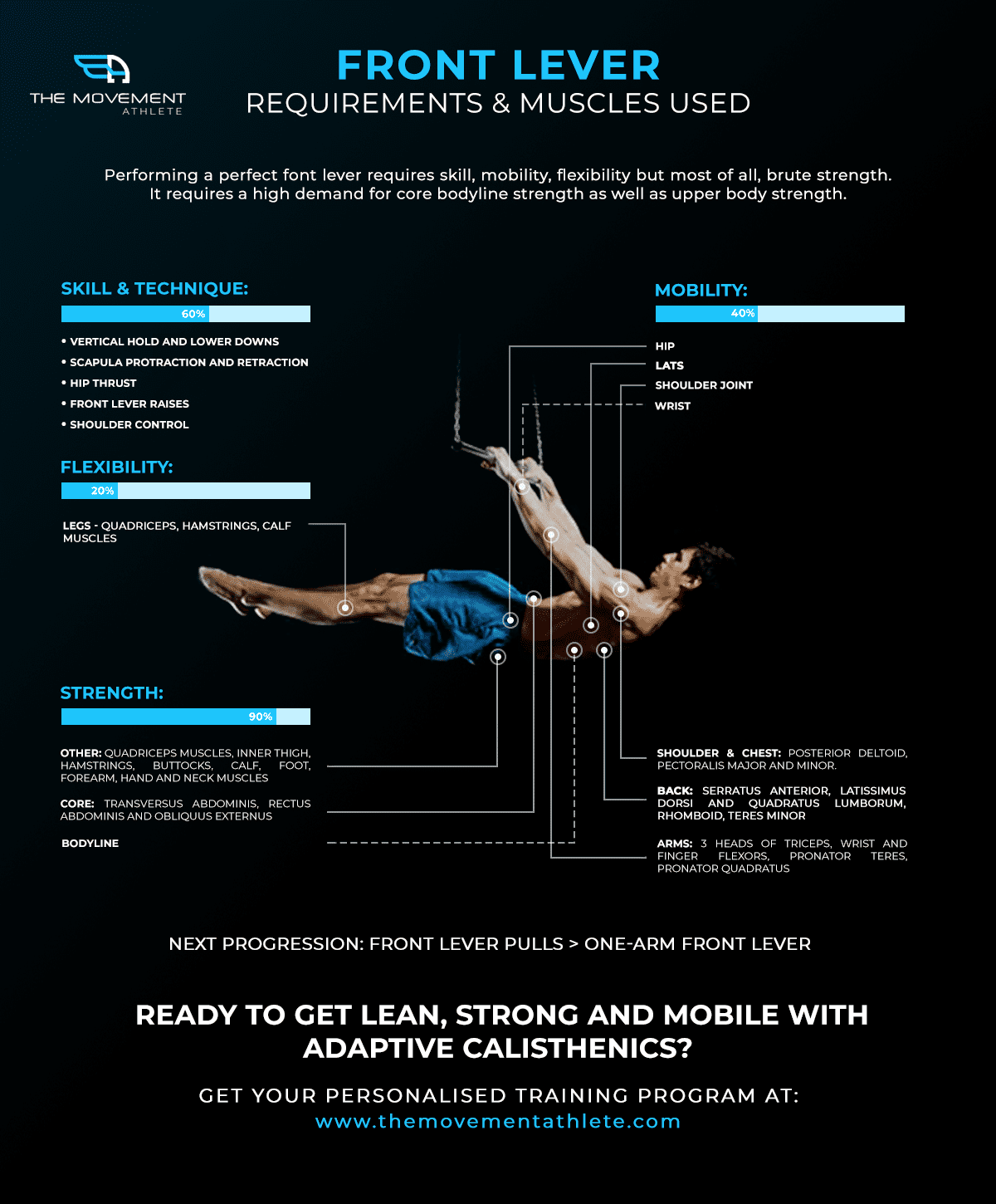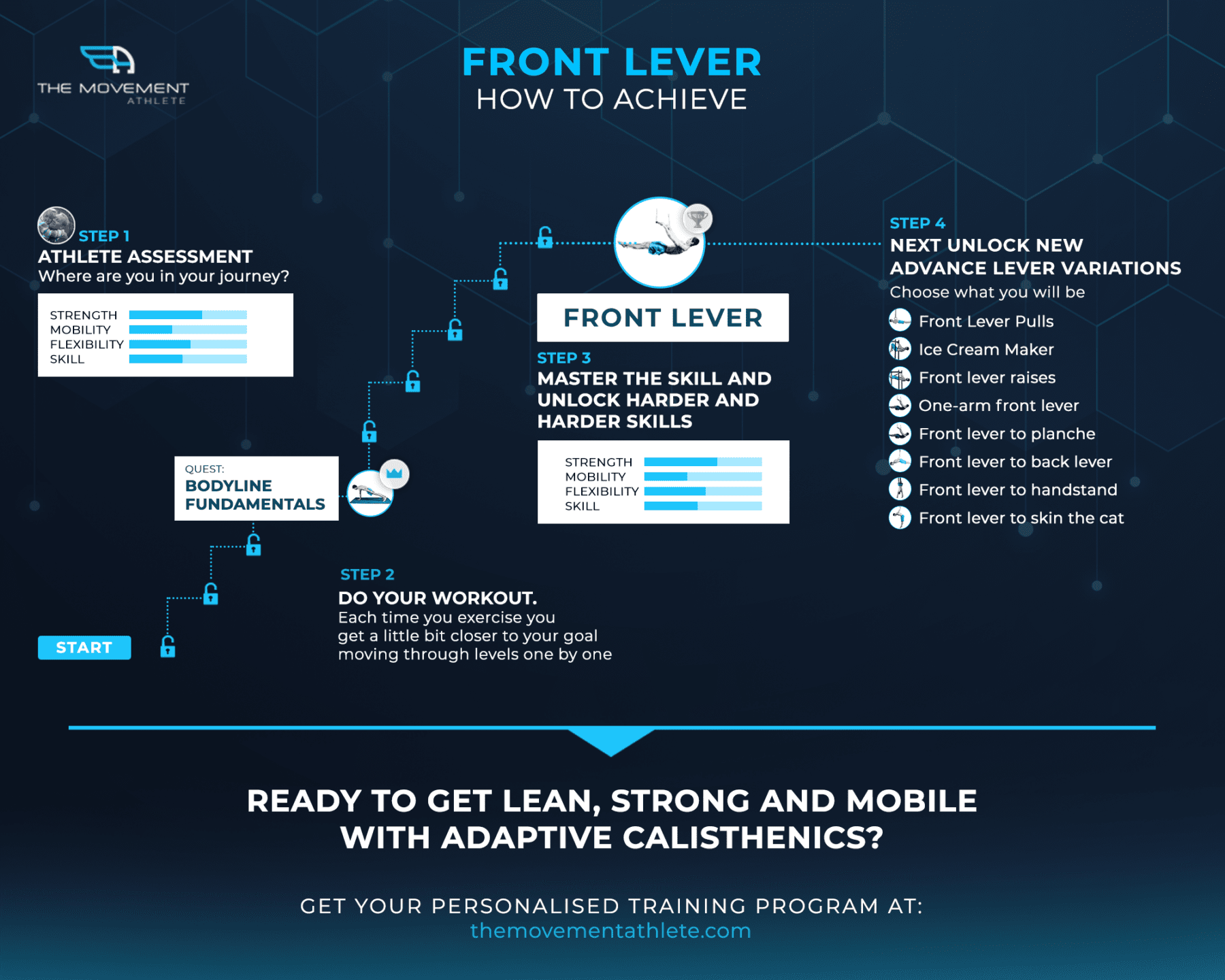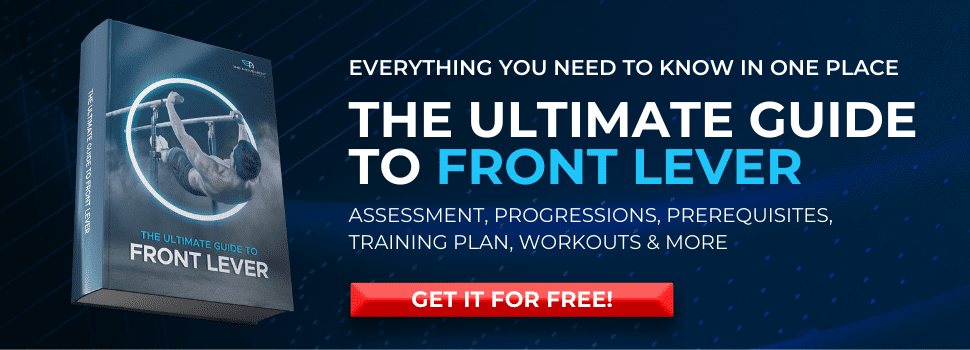
Join the tribe of Movement & Calisthenics Athletes – people just like you that are working with their own body weight to get strength, lose fat build muscle, recover from injuries and live their best lives!
Advanced calisthenics athletes portray advanced skills as if they’re a piece of cake. Defying gravity with solely their bodies or, for some, using photoshop.
The front lever is not an exception here. Hanging on a bar while resisting gravity’s downward pull so your body’s basically hovering in mid-air is an astonishing display of strength and skill.
This leaves many people in awe yet for gymnasts and advanced calisthenics athletes, it’s already a basic tool in their arsenal.
But this doesn’t exclude us from learning the skill. It is totally possible with the right amount of research, work and dedication to the front lever.
📌How about us tall people?
Front lever is a leverage exercise. 🎯 To put in simpler terms, our shoulder joint is the axis of rotation and the rest of our body is the lever arm.
Axis of rotation is where our whole rigid body moves in our case. The father away our feet (or whole body) from our axis of rotation (shoulder joint), the more force gravity pulls you down.
This means that the taller you are, the more challenging, but not impossible, the front lever is to learn.
But don’t lose your motivation just yet.
Take this challenge and show everyone how you beat gravity!
🔎🔎What are the muscles used for the Front lever?
Since this is a calisthenics exercise, you’ll be using all of your muscles, but there are major players helping you perform the move.
Here are the muscles in action:

🔎🔎What are the requirements
to perform the skill?
REQUIREMENTS & MUSCLES USED
- ✅ STRENGTH – Front lever is more of a strength skill. Brute strength is required so if you have that in all the right areas, you’ll most likely get the front lever in a jiffy.
Here are the muscles mostly used to perform a front lever:
-
- Shoulder & Chest: posterior deltoid, pectoralis major and minor.
- Back: serratus anterior, latissimus dorsi and quadratus lumborum, rhomboid, teres minor
- Arms: 3 heads of triceps, wrist and finger flexors, pronator teres, pronator quadratus
- Core: transversus abdominis, rectus abdominis and obliquus externus
- OTHER: quadricep muscles, inner thigh, hamstrings, buttocks, calf, foot, forearm, hand and neck muscles
Notice that there are a lot of other muscles in play. As we mentioned earlier, it’s a calisthenics skill. Expect to use your whole body the whole time performing the movement, but the major key players are the back, chest, arms, and core. Core and not only the abs.
All of these muscles must be extra strong and so is the rest of your body.
- ✅ MOBILITY – We’ve talked about the shoulder joint that’s going to move for you to get to and hold the static exercise. You’ll be moving in shoulder extension. Of course, you’ll lead loads of strength but mobility will also play a vital roll in order to keep your shoulder joints healthy and happy.
You also need to be concerned about your hip mobility. You’ll need to hold a posterior pelvic tilt. Lacking mobility in hips might cause you to lose proper bodyline which breaks your overall front lever form.
Shoulder extension is a major movement in order to execute the move. Lats also play an important role in shoulder extension which is why lat strength and mobility are required for a front lever.
- ✅ FLEXIBILITY – It can be quite taxing on the lower body to hold it horizontal to the ground. Leg flexibility, especially on the posterior chain, can help elongate your legs during the difficult skill.
- ✅ SKILL & TECHNIQUE – The never-ending emphasis on proper form still persists here. The strengthening exercises done will also teach the skill and technique for the front lever.
But body coordination, muscle activation, and body control are also very vital aspects that help in learning and mastering the front lever.
There is an emphasis on entry movements such as the vertical lower downs and front lever raises. These exercises teach proper coordination for entry as well as muscle activation for the front lever.
Individual muscle activation exercises such as scapula contractions and military pull also help you learn the proper form so you can put them all together to finally get the front lever.
- ✅ ENDURANCE – Holding the static lever requires a very solid bodyline so you can hold them as much as you can.
Your core plays the central role to hold a solid bodyline. That’s why bodyline fundamental is a requirement and as you learn the front lever, more core extensive exercises will be used to further strengthen your mid-line.
🔎🔎Requirements to start
training for Front lever
PREREQUISITES
To unlock the front lever, you must master two fundamentals: bodyline and the pull-ups.
- Body line fundamental builds the strong core required to hoist and hold your body up to a horizontal position in the air.
- The front lever is a pulling exercise so it’s naturally, you would need a very good pulling strength to get it right. You need to master the basics of pulling which is the pull-up. The strength component and motion of pull-ups are highly transferable to the front-lever. Master this basic move in its full range of motion to maximize your gains and hasten your learning process for the lever.
BODYLINE FUNDAMENTAL
Pseudo plank hold
Elbow plank on knees hold
Elbow plank
Arm plank hold
Running man
Elbow plank pulses
Rocking hips elbow plank
Plank pulses
Single elbow plank hold
Unstable surface plank
One arm plank

